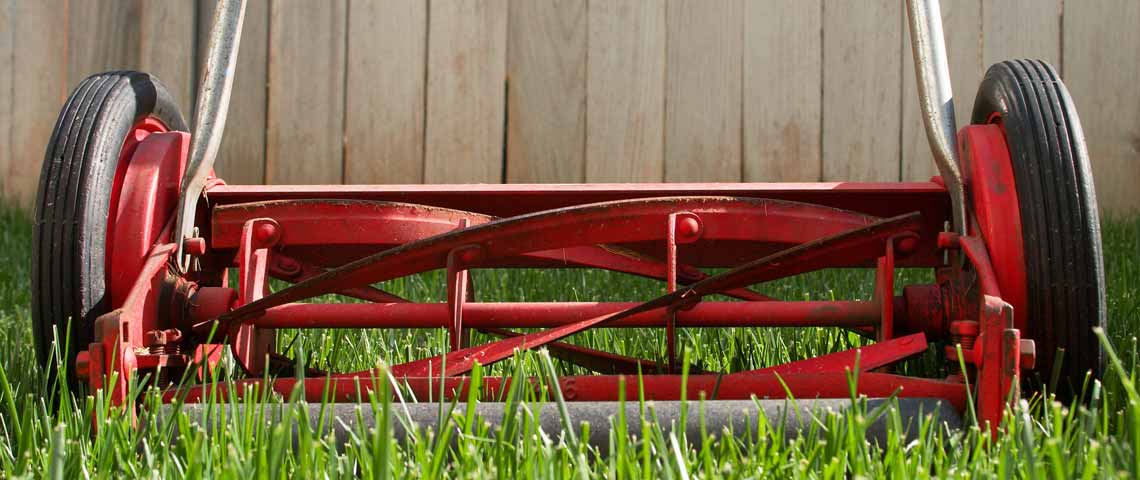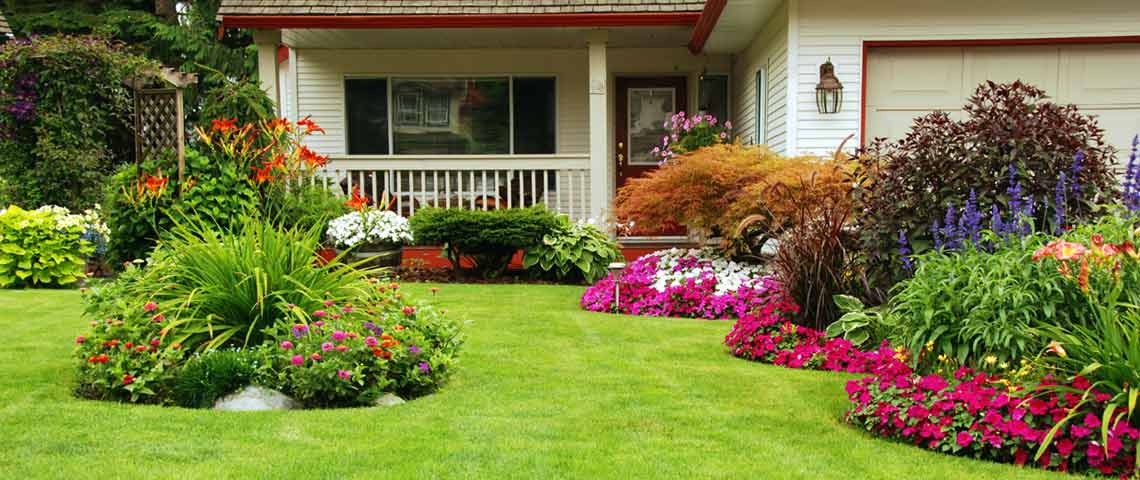How to Choose the Best Mower, Trimmer and Edger for Your Yard
When choosing lawn tools, you want to get it right. The proper mower, trimmer and edger can make all the difference in the quality of the finished job and the amount of effort and enjoyment you experience. Understanding the basics helps match your needs to the tools that meet them. Narrowing down the field starts with the following considerations:
- The size of the area you maintain
- The type of terrain, whether flat or hilly
- The number of trees, garden beds and other obstacles
- The amount of time and energy you want to expend
With those four decision-swayers in mind, you can move on to making choices.
Managing Lawn Mower Options
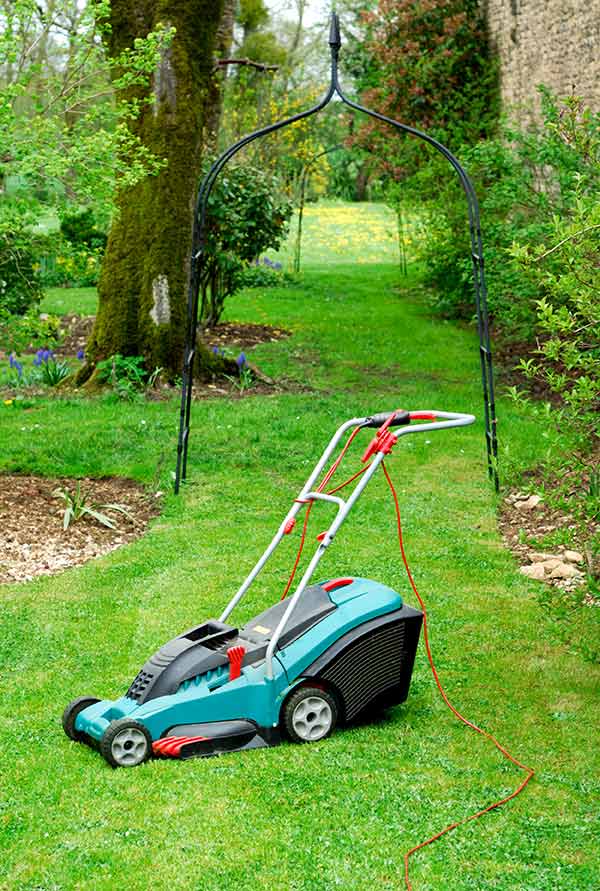
Lawn mowers fall into two main categories: walk-behind and rider. As of 2013, the median lot size for a detached, single-home in the United States was about 1/4 acre1 — a size well suited to walk-behind models. For areas 1/2 acre and larger, rider mowers may be a better fit. However, the options don't stop there.
Walk-Behind Mowers
From traditional push models to self-propelled types, all walk-behind mowers work well on even terrain. But hills and large lots are easier to navigate when mowers propel themselves.
Walk-behind types include the following types:
- Reel mowers - These retro-style push mowers rely on man power, not electricity or gas. Blades rotate vertically with scissor-like action that delivers the highest quality cut2, provided the operator walks fast. By design, reel mowers are narrow in width. That translates to more trips across the lawn, but it eliminates noise and emissions. Reel mowers suit small lawns and short grasses best.
- Electric rotary mowers - Available in corded and cordless models, electric mowers power rotating horizontal blades that pack more power than reels. Electric types run quiet, with limited environmental impact, and suit shorter, well-maintained lawns. Outdoor outlets and cord length restrict the reach of corded models, while charge and recharge times limit cordless types.
- Gas rotary mowers - Limited by gas tank size and refills, gas-powered rotary mowers deliver the most power, but also create noise and emissions. Extra power supports bigger decks that cut wider swaths of lawn, and handles uneven terrain and long, coarse grasses well.
Cutting decks, which cover and contain the blades that cut your grass, manage lawn clippings differently. Side-discharge decks blow clippings to the side, onto the lawn. Mulching decks cut clippings several times, leaving tiny pieces that add beneficial nutrients.2 Rear-discharge bagging mowers collect clippings for easy disposal, but emptying bags adds time.
Self-propelled mowers offer drive options, similar to automobiles. Front-wheel-drive mowers maneuver easily, especially on level terrain. Rear-wheel-drive models provide added traction for weighty baggers. All-wheel drive manages rough, uneven terrain the best.
Other considerations include wheel size and ease in changing mowing height. Large rear wheels can improve maneuverability. Some cutting decks change height with the flick of a lever; others require adjustments to each wheel.
Riding Mowers
Large lawns and acreages suit the added engine power and speed of riding mowers with cutting widths up to and greater than 60 inches. The National Gardening Association advises an additional 10 inches of rider deck width may save up to 30 minutes mowing time per acre,3 so match your mower to lot size and time requirements.
As with cars, transmissions vary. Manual-transmission riders work like a standard stick shift. Automatic transmissions offer variable speeds at low and high gears, and hydrostatic transmissions allow for smooth operation and speed without changing gears. As with walk-behind mowers, riders come with side, rear or mulching decks, but bigger differences lie in size, power and maneuverability in the following categories:
- Lawn tractors - These traditional riders fit lots too large for walk-behind work, but small enough for narrower cutting widths.
- Garden tractors - Increased size and power in these models enables wider cutting decks and added attachments, including heavy-duty tillers and snow blowers.
- Zero-turn-radius (ZTR) mowers - “On-a-dime" turns and fast speeds on ZTRs make quick work of complex lawns, such as those with a number of trees or undulating bed lines.
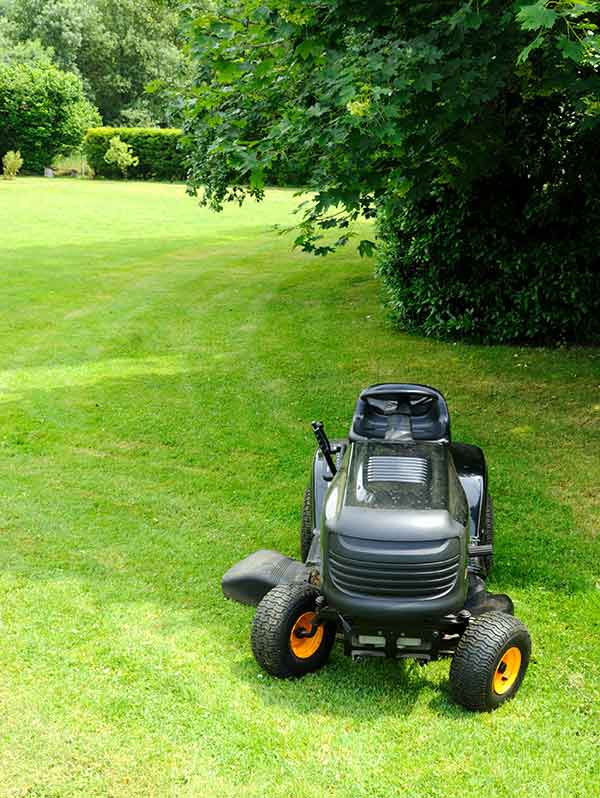
Selecting the Right Trimmer
String trimmers pick up where mowers leave off, cutting long grass or weeds with one or more spinning plastic lines. They reach obstacles and areas not suited to mowing, and even serve as edgers when held, so strings spin vertically instead of horizontally. Trimmers come in various types:
- Electric trimmers - Lightweight and manageable, electric trimmers trade power for ease. Cutting areas are smaller, and limitations for corded and cordless models echo those of electric mowers.
- Gas trimmers - These heavier, more powerful models offer large cutting radiuses and heavier strings. The tradeoff is user fatigue and more noise.
- Wheeled trimmers - These mower-like, wheeled machines put cutting string heads out front, and simplify heavy grass and rough terrain.
Some gas-powered trimmers adapt to metal blades in lieu of plastic strings to manage thick weeds and brush — things electric types can't handle. Heavy adaptable models require greater control and more support. Handle bars and shoulder straps or harnesses help reduce operator fatigue.
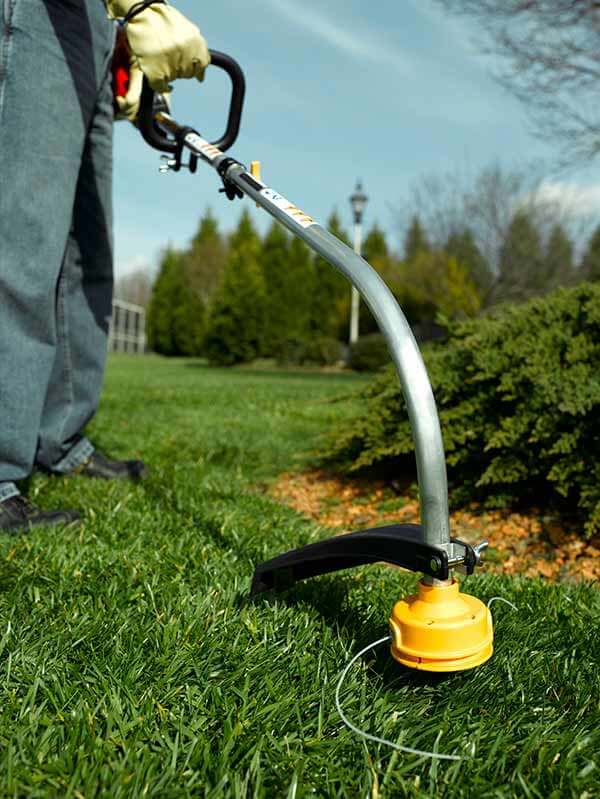
Selecting the Right Edger
Edgers provide the finishing touch that separates manicured lawns from mowed. While multi-tasking string trimmers fill the need for many homeowners, tools designed for the specific purpose provide more impact and precision.
Walk-behind, wheeled edgers establish crisp, new lines or trenches along walkways and curbs or garden beds. Equipment rental stores offer these specialized machines. For regular maintenance, consider smaller edgers in gas and electric models.
- Stick edgers - These lightweight, handheld tools maintain existing edges well. They range from simple manual devices, such as long-handled sticks with a metal half-moon on the end, to lightweight, engine-powered models.
- Multi-use edgers - Interchangeable heads allow these tools to shift between multiple tasks, from edging lawns to pruning trees.
Fitted with the right tools for a well-maintained lawn, you can get the quality results you desire and enjoy the task and the leisure time that follows. Pennington Seed is committed to producing premium grass seed products and helping you grow and enjoy the healthiest, lushest lawn possible.
Sources:
1. U.S. Department of Housing and Urban Development, “2013 American Housing Survey Takes Deep Dive into U.S. Housing Stock," October 2014.
2. Pound, William E. and Street, John R., “Lawn Mowing," Ohio State University Extension.
3. MacCaskey, Michael, “Lawn and Garden Tractors," The National Gardening Association.

